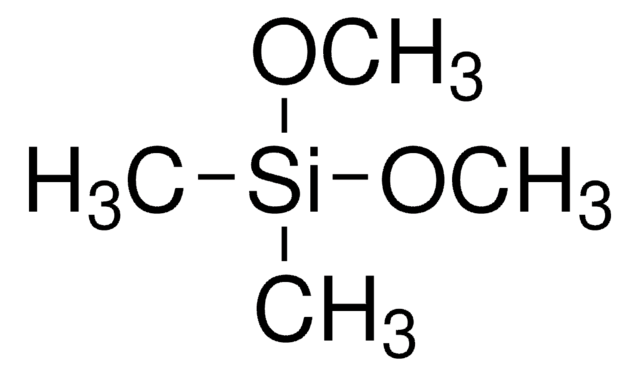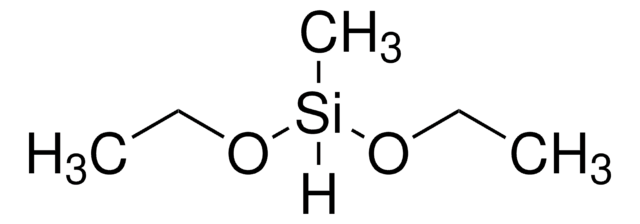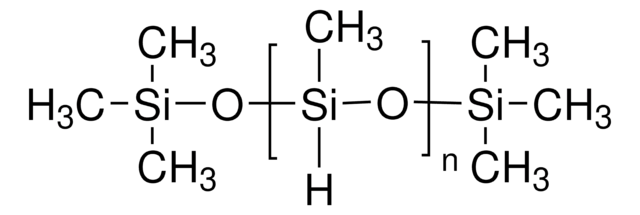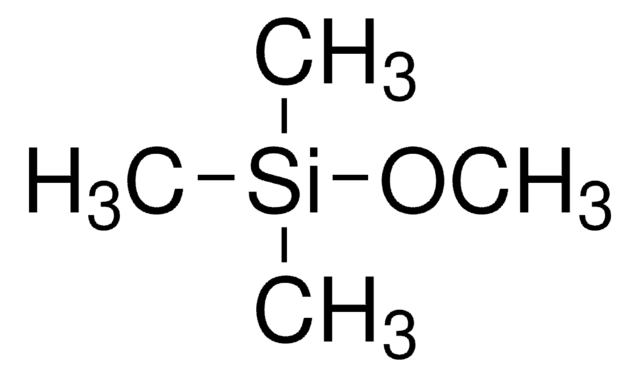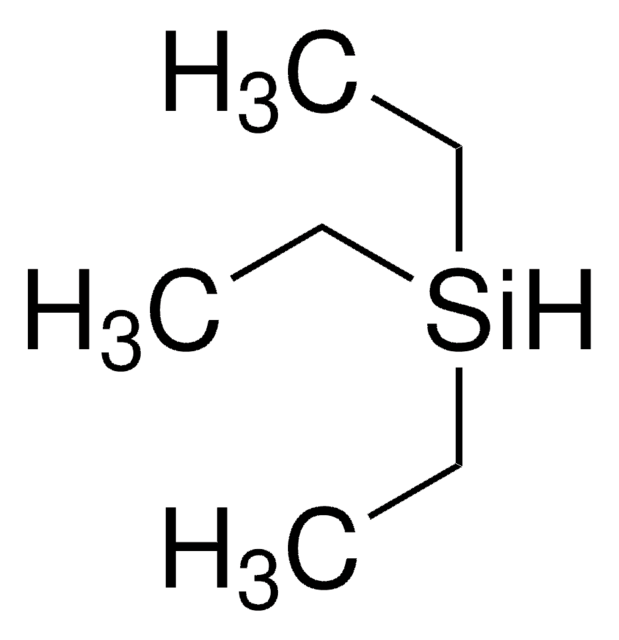All Photos(2)
About This Item
Linear Formula:
(CH3O)3SiH
CAS Number:
Molecular Weight:
122.20
Beilstein/REAXYS Number:
1697990
EC Number:
MDL number:
UNSPSC Code:
12352103
PubChem Substance ID:
NACRES:
NA.22
Recommended Products
vapor density
>1 (vs air)
vapor pressure
<7.2 mmHg ( 20 °C)
assay
95%
form
liquid
refractive index
n20/D 1.358 (lit.)
bp
81 °C (lit.)
mp
−115 °C (lit.)
density
0.96 g/mL at 25 °C (lit.)
SMILES string
CO[SiH](OC)OC
InChI
1S/C3H10O3Si/c1-4-7(5-2)6-3/h7H,1-3H3
InChI key
YUYCVXFAYWRXLS-UHFFFAOYSA-N
Looking for similar products? Visit Product Comparison Guide
signalword
Danger
hcodes
Hazard Classifications
Acute Tox. 1 Inhalation - Eye Irrit. 2 - Flam. Liq. 2
Storage Class
3 - Flammable liquids
wgk_germany
WGK 3
flash_point_f
48.2 °F - closed cup
flash_point_c
9 °C - closed cup
ppe
Eyeshields, Faceshields, Gloves, type ABEK (EN14387) respirator filter
Choose from one of the most recent versions:
Already Own This Product?
Find documentation for the products that you have recently purchased in the Document Library.
Customers Also Viewed
Wonryung Lee et al.
Advanced materials (Deerfield Beach, Fla.), 28(44), 9722-9728 (2016-10-08)
Integration of organic electrochemical transistors and organic field-effect transistors is successfully realized on a 600 nm thick parylene film toward an electrophysiology array. A single cell of an integrated device and a 2 × 2 electrophysiology array succeed in detecting
Chen-Cheng Xue et al.
Science advances, 6(18), eaax1346-eaax1346 (2020-06-05)
The rapid development of treatment resistance in tumors poses a technological bottleneck in clinical oncology. Ferroptosis is a form of regulated cell death with clinical translational potential, but the efficacy of ferroptosis-inducing agents is susceptible to many endogenous factors when
H Cheraghi Bidsorkhi et al.
Nanotechnology, 27(41), 415706-415706 (2016-09-09)
In this research, novel ultrafiltration nanocomposite membranes were prepared by incorporating self-synthesized nanoporous titanium dioxide (NTiO2) nanoparticles into polysulfone. The surface of the nanoparticle was treated with a silane-based modifier to improve its distribution in the host polymer. Atomic-force microscopy
Jenni Pessi et al.
International journal of pharmaceutics, 472(1-2), 82-87 (2014-06-15)
In this study, microfluidic technology was employed to develop protein formulations. The microcapsules were produced with a biphasic flow to create water-oil-water (W/O/W) double emulsion droplets with ultrathin shells. Optimized microcapsule formulations containing 1% (w/w) bovine serum albumin (BSA) in
A Comparison Study of Functional Groups (Amine vs. Thiol) for Immobilizing AuNPs on Zeolite Surface.
Xi Rao et al.
Nanomaterials (Basel, Switzerland), 9(7) (2019-07-25)
Immobilization of gold nanoparticles (AuNPs) on the surface of zeolite has received a great interest due to Au@zeolite's unique characteristics and high performance for catalysis. In this work we studied the grafting of two different functional molecules; one having an
Our team of scientists has experience in all areas of research including Life Science, Material Science, Chemical Synthesis, Chromatography, Analytical and many others.
Contact Technical Service


